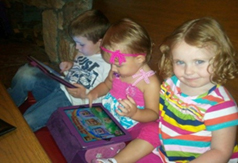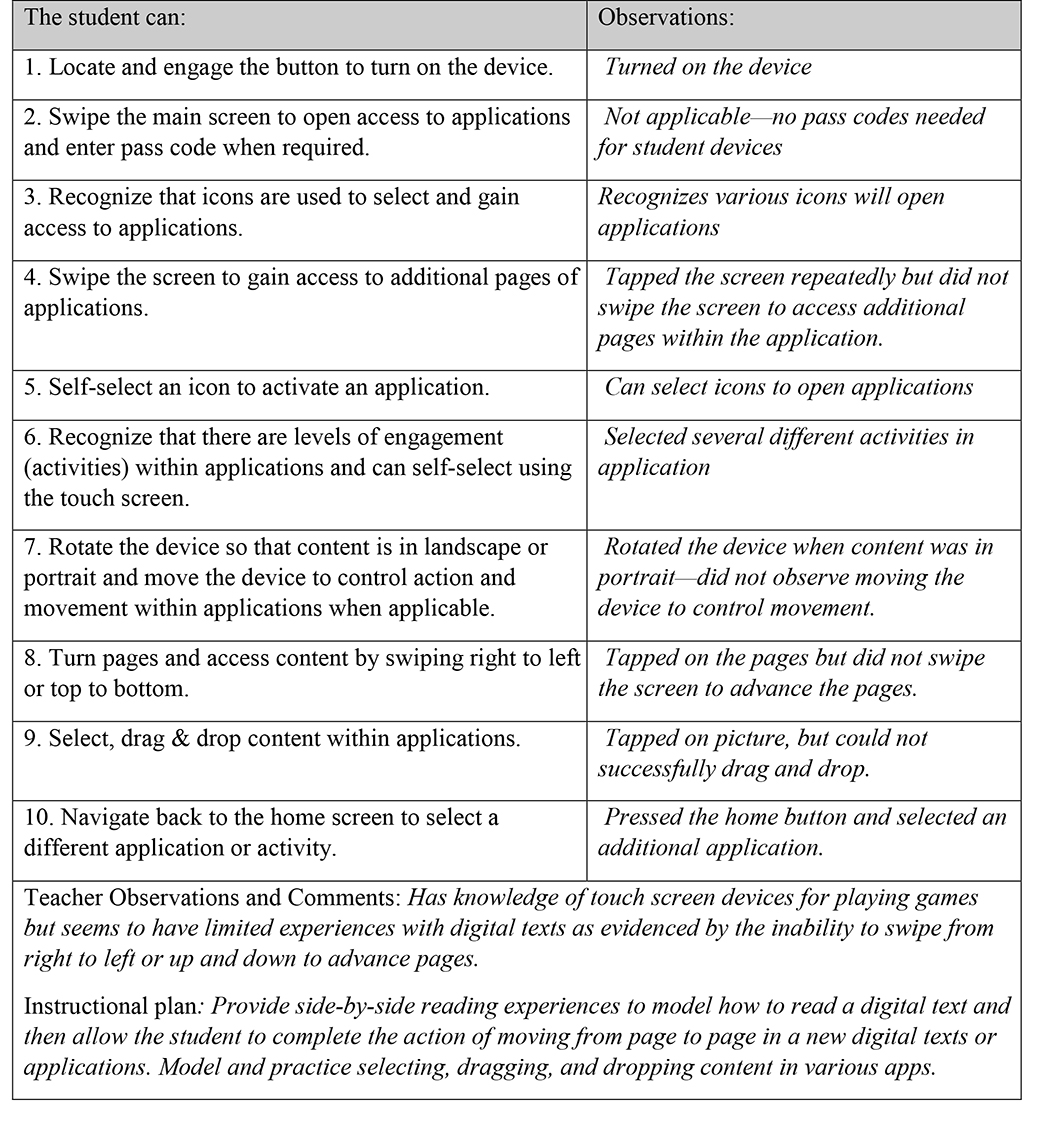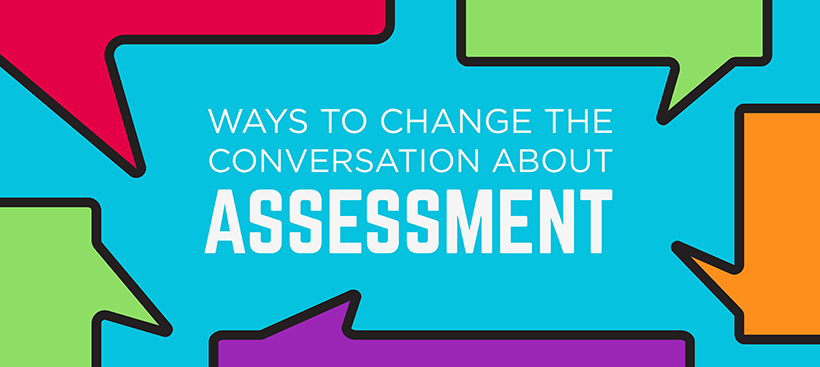This blog was written by Becky McCraw, a member of the NCTE Standing Committee on Assessment.
As a K–5, school-based literacy coach, I regularly engage in conversations surrounding the administration and analysis of digital literacy assessments. These assessments typically are given within weeks or even days of a child entering a formal school setting and provide the first formal record of literacy development, a first digital assessment footprint.
I was recently asked to “look for the story being told by the data.” I would venture to say that all teachers and literacy coaches should look for the story being written by that same data.
What assessment stories are being written in the lives of young children?
My interest in the area of digital literacy assessment in early childhood education has been influenced by my personal and professional experiences. As a school-based literacy coach, I have witnessed firsthand the influence of technology within the early childhood classroom and in the assessment of early literacy skills.
My interest in digital literacy and assessments was also influenced by my work with NCTE as I participated in the development of the Framework for 21st Century Curriculum and Assessment. These varied experiences led me to undertake an ethnography that examined the ways my own grandchildren (ages 5, 3, & 2) simultaneously developed both print and digital literacies (McCraw, 2014).
 In the fall in which the study concluded, my grandson (who was five and in kindergarten) participated in several early literacy assessments through the use of a desktop computer that required him to manipulate a mouse to select answers. I had closely observed his literacy development for many months and knew him to be an expert in the use of touch screen devices. I also knew that he was not as proficient with the use of a mouse and wondered if these assessments accurately reflected his literacy development.
In the fall in which the study concluded, my grandson (who was five and in kindergarten) participated in several early literacy assessments through the use of a desktop computer that required him to manipulate a mouse to select answers. I had closely observed his literacy development for many months and knew him to be an expert in the use of touch screen devices. I also knew that he was not as proficient with the use of a mouse and wondered if these assessments accurately reflected his literacy development.
This experience, along with observations of students in my own school engaged in similar computer-based assessments, led me to develop observation tools for computer and touch screen devices that might help teachers and literacy coaches to recognize the digital competencies that young children possess as well as to identify those skills needed to successfully demonstrate their literacy knowledge within digital assessments.
Assessing Digital Skills Prior to Assessing Literacy Skills Digitally
Many people assume that young children possess the needed skills to successfully engage in digital assessments. There is no question that most children come to school with many hours of digital experiences that might make them quite capable of swiping or clicking their way through digital literacy assessments.
In fact, they may have had many more hours with digital environments than with print-based materials. However, those assumptions could lead to additional assumptions about a child’s foundational literacy skills, both digital and print-based, that may or may not be accurate.
Many early childhood educators integrate the use of technology as an option when selecting instructional materials, but they typically don’t assess the digital skills children bring to school. My research and experience indicate that teachers may need to assess the digital skills students possess before they assess foundational literacy skills in digital settings.
I believe that it’s important for educators to recognize the digital expertise that many children bring to the classroom as well as the need to identify areas for potential skill growth so that every child gains expertise in a variety of digital literacy skills.
To facilitate assessment of students’ digital literacy, I offer these two observation tools (see links in earlier text) for computer and touch screen devices that can be used by educators to determine the digital skills that young children possess prior to assessing literacy skills in digital environments.
Kidwatching Tools for Digital Competencies
Kidwatching (Owocki & Goodman 2002) includes strategies teachers use to get to know their students and gain insights into their literacy development. The insights gained through kidwatching can lead teachers to examine their own beliefs about literacy.
The observation tools I offer here are not intended to identify deficits or to imply that students who don’t enter school with these skills are lacking in some way. In fact, these might be used to identify the digital experts in classrooms.
When used as an additional means of gathering kidwatching data, these tools could lead teachers to provide instruction and practice in needed digital skills prior to administering digital assessments. Below I offer a sample of how I used the observational checklist. (Because digital technology is always changing, the tools presented here are not definitive lists of digital competencies but are intended as a starting point.)
We invite you to share your thoughts on digital assessments in the lives of the children you teach and to consider how you might use these kidwatching tools as a means of ensuring that all children have the needed skills to show what they know and are able to do within digital assessment environments.
Sample
The Early Childhood Observation Tool of Digital Concepts of Touch Screen Devices

(McCraw, 2014)
References
Owocki, G., & Goodman, Y. M. (2002). Kidwatching: Documenting children’s literacy development. Portsmouth, NH: Heinemann.
McCraw, B. (2014). There’s an app for that: Uses of print and digital materials in the lives of three preschoolers. (Unpublished doctoral dissertation). University of South Carolina, Columbia, SC.

